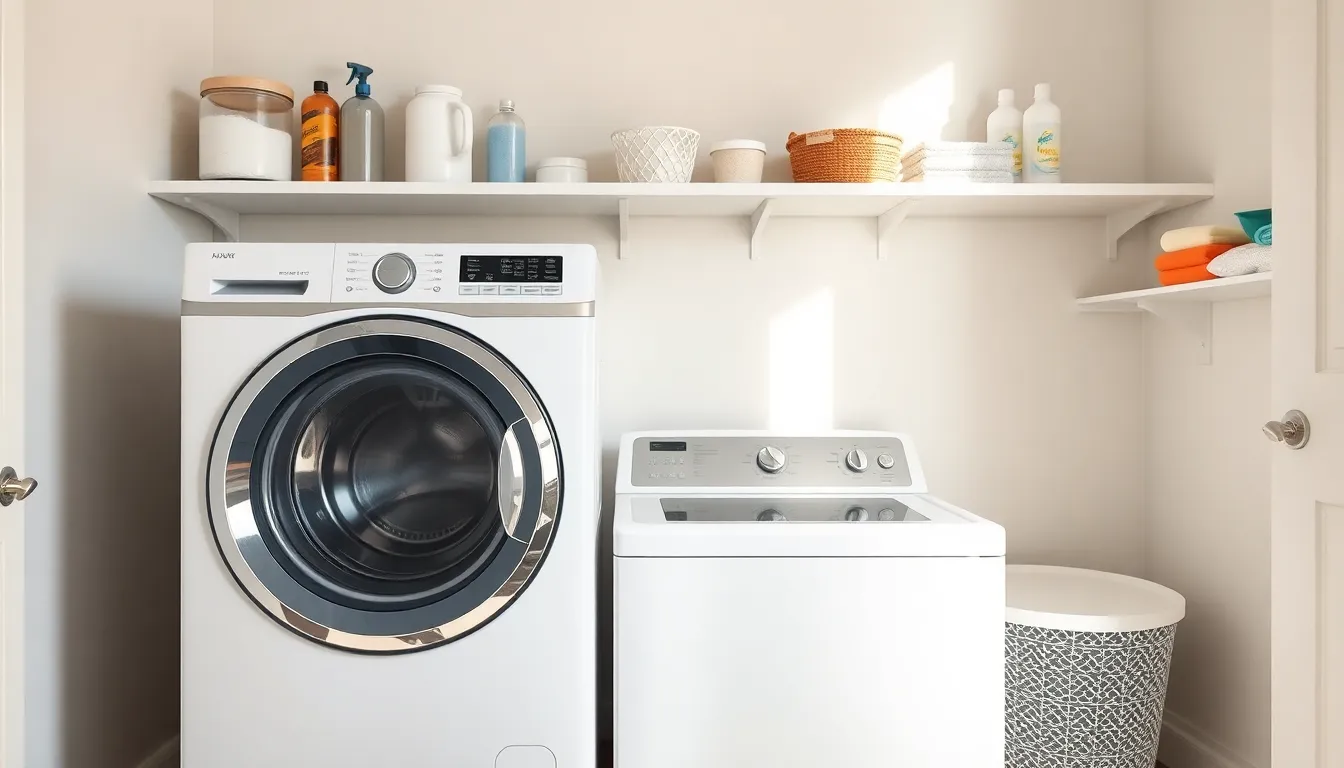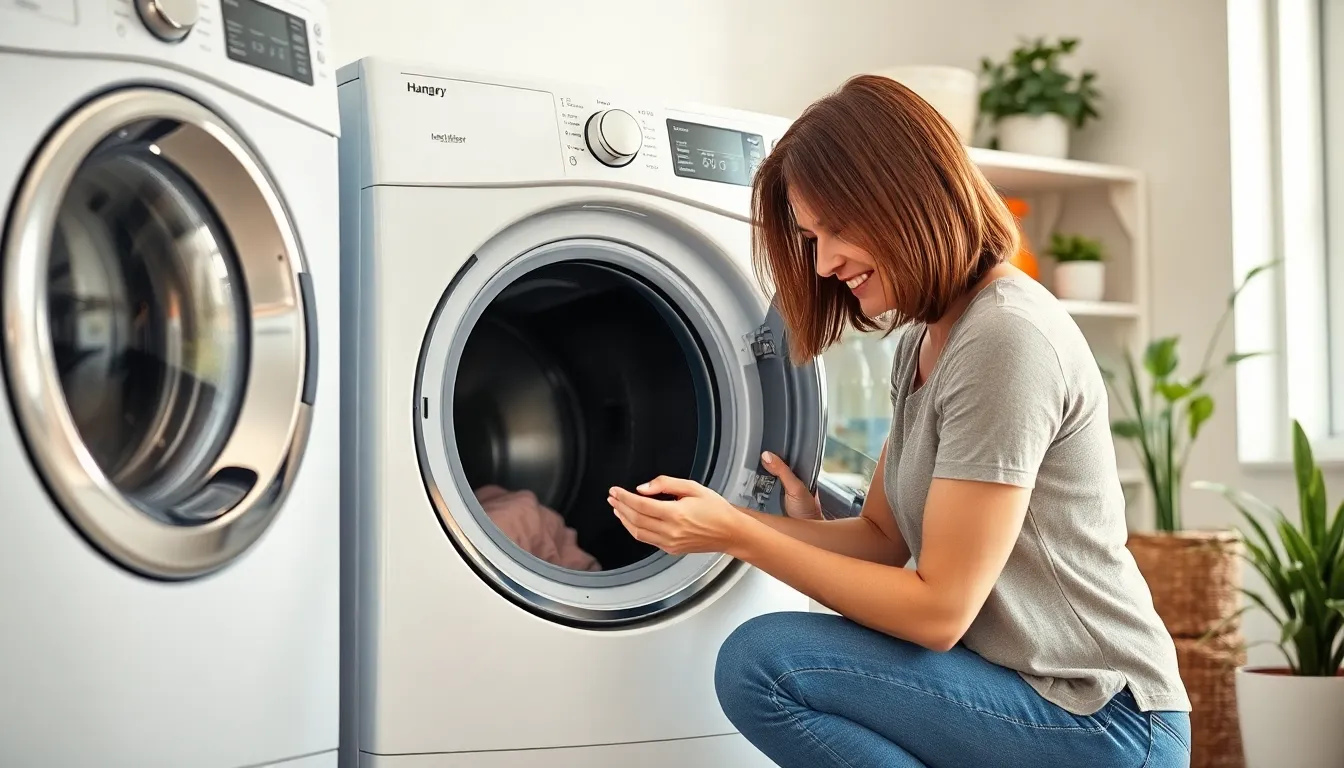Laundry rooms often get overlooked in the hustle and bustle of daily life. Yet, these spaces play a crucial role in maintaining a clean and organized home. Regular laundry room checks can prevent small issues from escalating into bigger problems, ensuring that everything runs smoothly.
From checking the detergent supply to inspecting the washing machine and dryer for lint buildup, a quick routine can save time and money. By staying proactive, homeowners can create an efficient laundry environment that enhances productivity and promotes cleanliness. Discover how simple laundry room checks can transform this essential space into a well-oiled part of the household.
Table of Contents
ToggleImportance of Laundry Room Checks
Regular laundry room checks play a critical role in household maintenance. These inspections can prevent minor issues from escalating into significant problems. Homeowners benefit from frequent evaluations of supplies and appliances, ensuring seamless laundry processes.
Enhances Efficiency
Frequent checks boost appliance efficiency, saving time and energy. Monitoring detergent levels prevents interruptions during laundry cycles. Ensuring lint traps are clear reduces fire hazards and improves dryer performance.
Identifies Wear and Tear
Routine inspections pinpoint appliance wear and tear early. Spotting rust or leaks allows for timely repairs, avoiding costly replacements. Checking hoses and connections can prevent water damage in laundry spaces.
Maintains Cleanliness
Regular checks maintain a clean and organized environment. Addressing spills or detergent residue promptly prevents mold growth. A tidy laundry room enhances overall home aesthetics and promotes a sense of order.
Saves Money
Preventative checks can lead to significant cost savings. Maintaining appliances can extend their lifespan, reducing the need for replacements. Keeping supplies organized minimizes waste and unnecessary re-purchases.
Increases Safety
Checks increase safety by addressing potential hazards. Regularly inspecting electrical cords prevents fire risks associated with frayed wires. Ensuring proper ventilation in the laundry area reduces the risk of moisture-related problems.
Maintaining these practices ensures a functional and efficient laundry room, promoting a healthier and more enjoyable living space.
Key Areas to Inspect

Regular inspections of essential areas in the laundry room enhance functionality and safety. The following categories require specific attention for optimal performance.
Appliances
Inspect washing machines and dryers for visible wear and tear regularly. Check hoses for leaks, cracks, and signs of corrosion. Assess the drum and door seals for damage or mildew build-up. Verify that the lint filter in dryers is clean to promote airflow and prevent fire hazards. Test all settings and cycles to ensure they operate correctly, preventing inefficient washing or drying.
Safety Features
Examine electrical connections and outlets for frayed cords or loose connections, which may pose fire risks. Ensure smoke and carbon monoxide detectors are functional and installed properly. Inspect for proper ventilation, ensuring dryer vents are clear and direct to the outside. Check for moisture accumulation in the room to prevent mold growth and structural damage.
Supplies and Accessories
Assess detergent, fabric softeners, and stain removers for expiration dates and proper storage. Keep a stock of essential items, including laundry baskets and cleaning cloths, organized and easily accessible. Review other accessories, such as drying racks and ironing boards, for cleanliness and functionality. Proper inventory management prevents overstocking or running out of necessary supplies, streamlining laundry processes.
Common Issues Found During Checks
Routine laundry room checks often uncover common issues needing attention. Addressing these problems promptly enhances the functionality and safety of the space.
Equipment Malfunctions
Equipment malfunctions frequently arise in laundry rooms. Homeowners commonly encounter the following issues:
- Leaking hoses: Inspect hoses for cracks or loose connections that can lead to water damage.
- Unresponsive controls: Check dials and buttons to ensure they function properly. Faulty controls may disrupt the wash cycle.
- Insufficient drying: Address issues with dryer performance, such as inadequate heat or excessive noise, by inspecting vents and lint traps.
- Odors: Investigate strange smells from appliances, which may indicate mold or mildew buildup in washing machines or improperly vented dryers.
Early identification of these malfunctions allows for timely repairs, preventing further complications.
Safety Hazards
Safety hazards in laundry rooms often pose serious risks. Key hazards to look for include:
- Frayed electrical cords: Examine cords for wear, as damaged cords can lead to electrical shocks or fires.
- Moisture accumulation: Assess for leaks or dampness, which can foster mold growth and pose health risks.
- Lint buildup: Regularly check lint traps and dryer vents for clogs that may cause fires.
- Inadequate ventilation: Ensure proper airflow to prevent moisture-related issues, which can harm both appliances and health.
By addressing these safety hazards during routine checks, homeowners can create a safer laundry environment.
Best Practices for Effective Laundry Room Checks
Routine inspections enhance efficiency and ensure safety in the laundry room. Homeowners should follow specific practices to maintain functionality and organization.
Regular Maintenance
Regular maintenance is crucial for optimal appliance performance. Homeowners should schedule monthly checks to ensure appliances function correctly. Inspect washing machines for hose integrity, looking for cracks or leaks. Check dryer vents and lint traps to prevent fire hazards and ensure efficient drying. Cleaning these components enhances airflow and minimizes energy consumption. Additionally, homeowners should examine electrical connections for signs of wear, ensuring they remain safe and secure. Updating or replacing worn parts promptly prevents costly malfunctions and extends appliance lifespan.
Keeping a Check List
Creating a comprehensive checklist streamlines the inspection process. Homeowners can include items such as:
- Detergent Levels: Verify sufficient supply to avoid interruptions.
- Lint Filter Cleanliness: Inspect and clean after every load for safety.
- Hose Condition: Look for leaks or signs of wear.
- Electrical Cords: Check for frays or damage, replacing as necessary.
- Ventilation System: Assess for blockages and adequate airflow.
- Inventory of Supplies: Maintain an organized list of essentials, noting expiration dates.
Utilizing a checklist keeps inspections thorough and efficient, ensuring no critical areas are overlooked. Regular updates to the checklist based on changing needs can aid effective management of the laundry space.
Regular laundry room checks are essential for maintaining a safe and efficient space. By implementing routine inspections homeowners can catch potential issues early and ensure their appliances operate at peak performance. This proactive approach not only saves time and energy but also extends the lifespan of appliances and reduces the likelihood of costly repairs.
Additionally keeping the laundry area clean and organized contributes to a healthier home environment. By addressing common hazards and maintaining an inventory of supplies homeowners can create a laundry room that’s both functional and inviting. Embracing these practices transforms the laundry experience into a seamless part of household management.








